
Chestnuts are often referred to as a local superfood. However, for laypeople there is a risk of confusion with horse chestnuts, the consumption of which causes vomiting and nausea. Read here what to look out for when collecting chestnuts.
To the point
- Chestnuts can be recognized by their light brown fruit skin with soft spines
- Chestnuts are cultivated forms of chestnuts
- perishable fruits
- Suitable for preparing sweet and savory dishes
Table of contents
- Chestnuts
- Differentiate chestnuts
- Find chestnuts
- Recognize ripe chestnuts
- Prepare chestnuts
- Shelf life and storage
- frequently asked Questions
Chestnuts
In everyday language, the name chestnut is used for different fruits, even though the trees are not even related to each other. Edible chestnuts, too Chestnuts or Sweet chestnuts called, come from the Real chestnut (Castanea sativa, beech plant). Chestnuts or Maroni are Breeds of chestnuts and therefore also suitable for consumption. However, the fruits are not edible buckeye (Aesculus hippocastanum, Soap tree family), which are often used for crafts. They contain toxic saponins.
Differentiate chestnuts
fruit peel
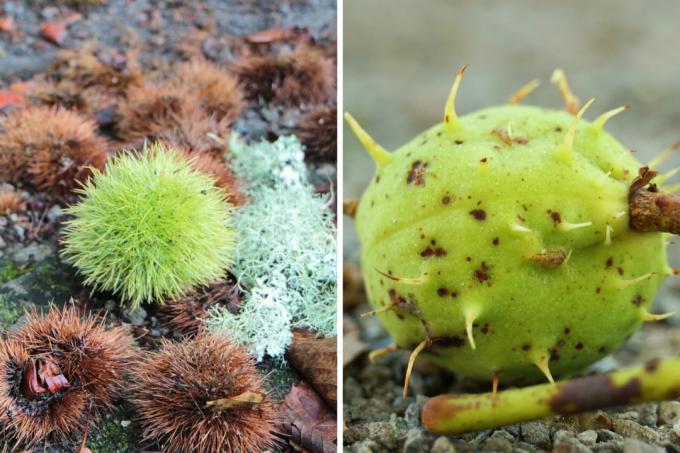
Although the fruit shell of chestnuts and horse chestnuts is covered in spines, fruits can be distinguished by their shell. The pericarp of chestnuts
- is completely surrounded by many long, thin spines
- Spines are softer than horse chestnuts
- As a rule, they do not hurt the skin
A notice: Inside the fruit shell of sweet chestnuts there are one to three fruits.
fruit
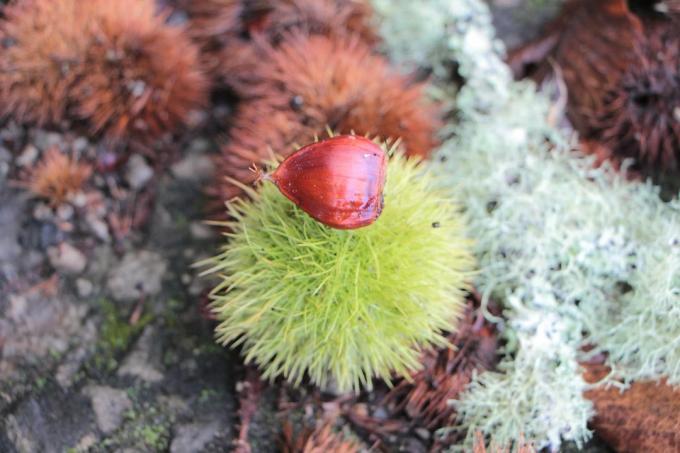
The fruits of the chestnut can be recognized by the following characteristics:
- heart-shaped
- flattened
- tapering to a point on one side
- Scar branches at the pointed end, often surrounded by brush-like hairs
Horse chestnuts lack hair. The fruits also have a round to spherical shape.
leaves
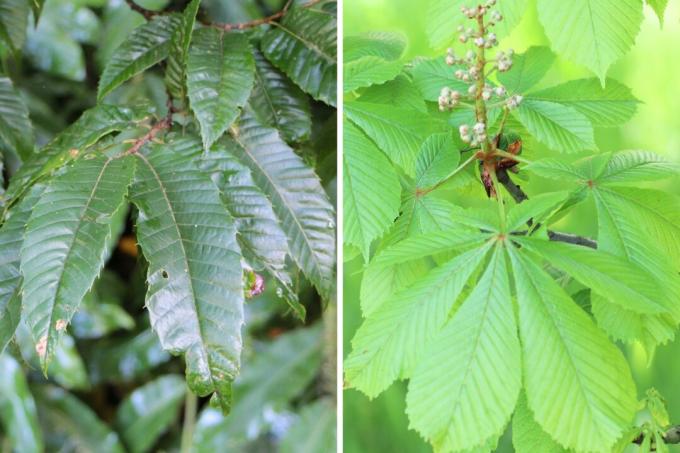
While the five to seven membered Horse chestnut leaves Reminiscent of the appearance of a hand, the leaves of the chestnut can be recognized by the following features:
- elliptical to lanceolate (not multiple segments)
- serrated edge with a forward tip
blossoms
Although the flowers feature does not help with collecting in the fall, it does help identify the chestnut in the spring. The horse chestnut bears the typical chestnut candles during the flowering period from April to June. On the other hand, the flowers of the sweet chestnut are
- unobtrusive
- reminiscent of willow pussycats
- Flowering time: June to July
Find chestnuts
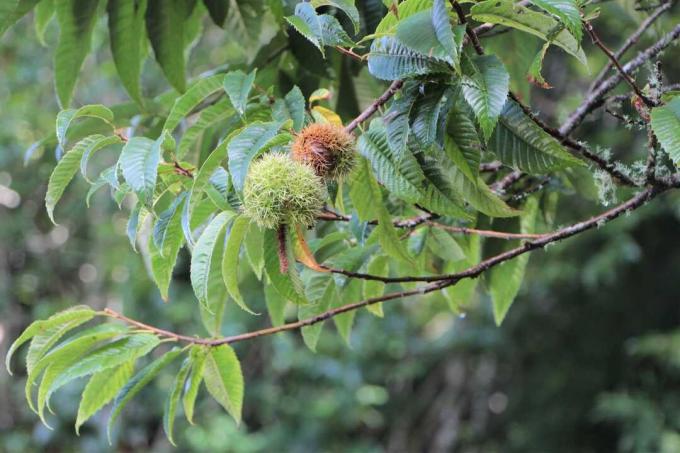
The sweet chestnut grows in sparse deciduous forests. It prefers full sun locations and requires a mild climate. It is usually found in regions where wine is grown. For example, chestnuts come from Germany
- in the Pfalz,
- on the Moselle, the Saar, the Nahe as well
- in Baden-Württemberg (Black Forest)
before.
Recognize ripe chestnuts
Sweet chestnuts ripen in autumn. In Germany the harvest time is between the end of September and the end of October. Full ripeness is reached when the spines of the pericarp are light brown in color. If this time has come, you should go collecting after a few windy days as the wind has blown the fruit off the tree. You shouldn't wait too long, because that's it Wildlife Like to eat chestnuts. In addition, chestnuts that are left wet on the ground quickly become moldy.
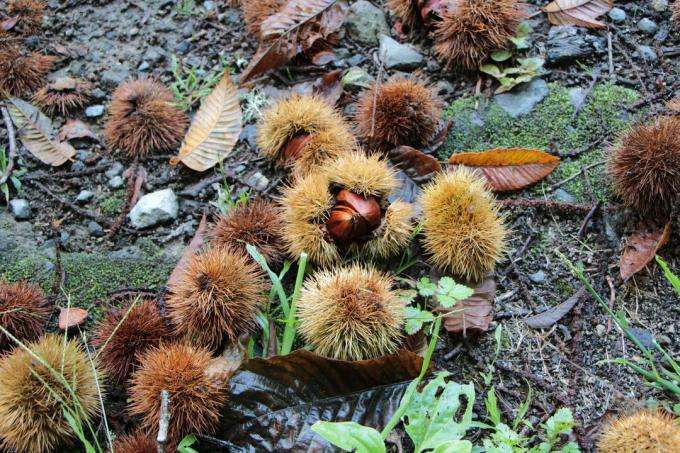
A notice: Although the spines on the fruit shell of chestnuts are described as soft, they should be used for collecting or As a precaution, wear gloves when breaking open.
Ripe fruits can be recognized by their uniform brown color. If the chestnuts still have white spots, they are unripe, but they will ripen at home. To do this, wrap chestnuts in paper and place them in a warm, dark and dry place.
Prepare chestnuts
After collecting, you must first remove the brown peel that surrounds the flesh of the chestnuts before you eat the fruit. can process further. Since this is extremely laborious when raw, chestnuts are boiled or roasted in advance.
Tip: Before preparing the fruit, subject it to a freshness test. To do this, place the chestnuts in a bowl of lukewarm water. Fresh specimens sink to the ground. Sweet chestnuts that remain on the surface may contain worms and should not be consumed.
Chestnuts from the oven
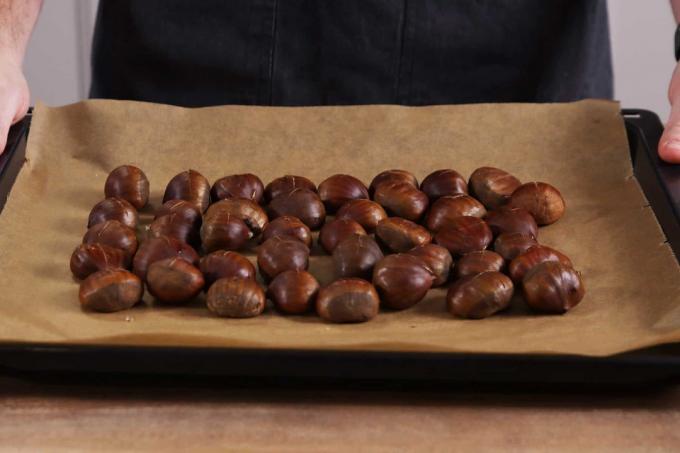
This method is suitable for both preparation and preparation. Proceed as follows:
- Preheat the oven to 200 degrees Celsius (top/bottom heat).
- Cut the chestnuts crosswise with a sharp knife
- Shell must be completely severed
- Spread the sliced chestnuts on a baking tray
- Place a small bowl of water on the baking sheet
- Put the baking tray in the oven
- Bake chestnuts for 20 to 30 minutes
- Recognize fully baked chestnuts: the scored shell curves slightly upwards, the tips diverge
An alternative is to prepare it in a saucepan. To do this, put the cut chestnuts in a pot with water and let the chestnuts cook for about 20 minutes. Since the cooking pot can turn brown, you should use an older model.
Tip: The roasted or Cooked chestnuts are easy to peel when hot. You can eat them immediately hot or process them further when peeled. You can also freeze the peeled nuts.
Shelf life and storage
You should use collected chestnuts as soon as possible as they are highly perishable fruits. Do they need to be stored
- Place the sweet chestnuts in a basket that is permeable to air on all sides.
- Location: cool, dry and dark
- Shelf life: up to three months
- at room temperature: a few days
- in the fridge: one to two weeks
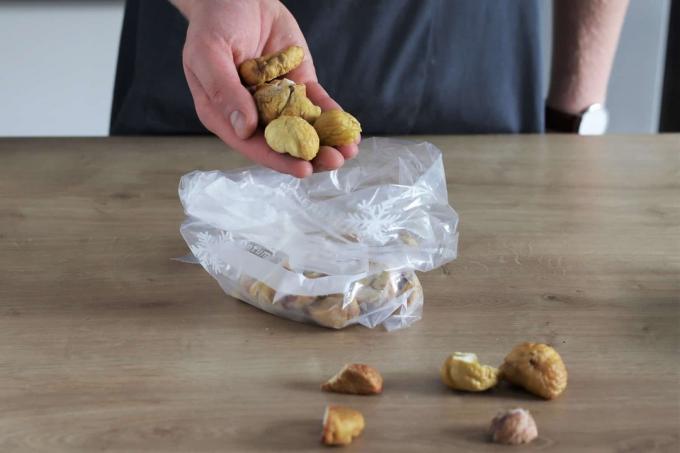
A notice: You can recognize chestnuts that have been stored too long or incorrectly by their dry and wrinkled skin, which gives way easily when pressed with your finger. The chestnuts also smell musty or show visible traces of mold.
frequently asked Questions
Collecting someone else's tree is permitted if it is an “ownerless” tree. For example, if the chestnut tree is in a park, you should contact the responsible authority for information.
As a rule, you are allowed to collect chestnuts for your own use.
As with mushrooms, a woven basket is ideal for collecting chestnuts. Plastic bags or plastic containers are less suitable as moisture can build up, which can cause the chestnuts to mold more quickly.



